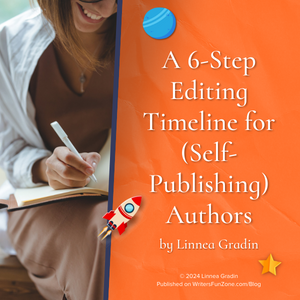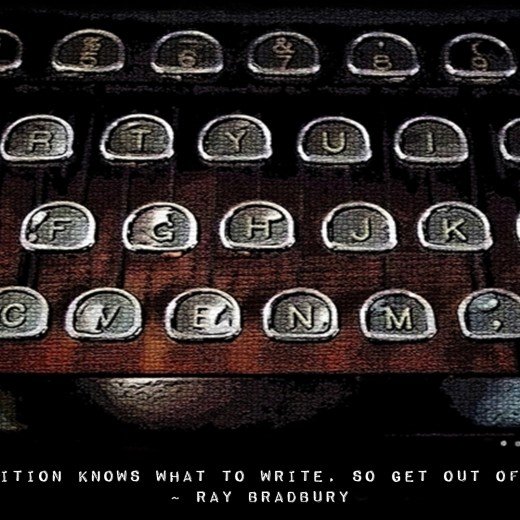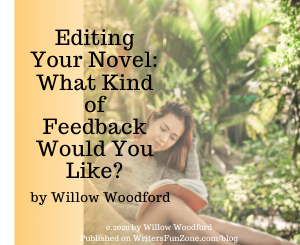A 6-Step Editing Timeline for (Self-Publishing) Authors by Linnea Gradin
 Let’s welcome back Linnea Gradin as she shares with us “A 6-Step Editing Timeline for (Self-Publishing) Authors.” Enjoy!
Let’s welcome back Linnea Gradin as she shares with us “A 6-Step Editing Timeline for (Self-Publishing) Authors.” Enjoy!
***
Whether you’re self-publishing or going down the traditional route, getting an editor to look at your manuscript too early is almost as bad as doing it too late.
You want to bring them in precisely at the point when their feedback and edits can have the biggest impact.
So, to get the right timing, I’ve outlined a basic plan to help you determine when to hire a professional editor for different types of editing along your journey and what to expect from a professional editor, as well as when you should simply stay the course of self-editing.
Note: Though these steps assume that you aim to self-publish, much of it is relevant to people who want to query agents and publishers too.
1. Revise your manuscript by yourself
Never hand over your very first draft to an editor. There’s plenty of work you can do on your own to assess and fix your manuscript, improving your story’s structure, character development, and pacing before anyone else gets involved.
At this point, go through your manuscript to identify big-picture issues and try your best to fix them. Avoid paying a professional editor to tell you something you could have figured out yourself.
2. Get a developmental edit
Once you’ve revised your structure as best you can, a developmental editor will be able to validate where you’ve made great progress with your self-editing, pinpoint where your manuscript is lacking, and suggest creative, detailed solutions for those problems.
Top tip: Clean up your grammar and spelling mistakes before any edit. A manuscript riddled with basic typos is distracting and hard to read.
Passing this on to your editor will potentially increase the cost and affect the quality of your feedback (if the editor is unsure of your intentions with certain sections).
3. Action your editor’s suggestions
Ideally, your editor’s advice will make sense to you.
Your next few rounds of revisions should be guided by their suggestions.
Perhaps you need to cut the first two scenes and make sure the inciting incident happens earlier.
Maybe you need an extra character who can reveal more about your protagonist’s upbringing.
The editor will suggest how to edit your book, and by actioning their feedback, your manuscript will hopefully start to flow on a structural level.
4. Start revising on a sentence level
Before this point, you needn’t tinker too much with your sentences and paragraphs.
After all, you don’t want to spend hours rewriting a confrontation between two characters, only for your developmental editor to tell you that the whole scene needs to go.
When all your scenes are in place, you can focus on self-editing your manuscript at a micro-level, slicing away unnecessary exposition, fixing your dialogue punctuation, and finessing the language until you hit a point where you don’t think you can improve it by yourself.
5. Get a suitable copy editor
Now, you could have technically skipped the previous step and hired a copy editor as soon as you’d finished actioning your developmental edits.
But if you hand a copy editor a sloppy manuscript, they will clean it up for you; give them a manuscript that’s already clean, and they will make it sing.
Top tip: Always search for editors with experience in your genre.
A talented business book editor can ensure that your fantasy novel is free from grammatical errors, but they won’t necessarily know how the characters should speak and what readers expect from the prose.
6. Hire a proofreader to iron out the creases
This final step is seen as optional by many indie authors, though it shouldn’t be. It’s technically the copy editor’s job to iron out typos and grammatical errors — but of course, pobody’s nerfect, and getting a final set of eyes before your launch date is crucial to uncovering small mistakes.
In traditional publishing, the proofreader comes in after a book is formatted so they can pick up on formatting issues such as widows and orphans and identify mistakes that may have been introduced since your last edit.
If you are formatting the book yourself, you may want to do the same and hire a proofreader to give your formatted book a thorough once-over.
However, if you’re planning to work with a professional interior designer (sometimes called a typesetter), you will want to get a proofread before they format your book.
In fact, many designers will flat-out refuse to work on a book that hasn’t been professionally proofread.
When the author inevitably spots something wrong in the final version (that would’ve been ironed out by a proofreader), they’ll have to re-hire the typesetter to go back and fix the mistakes — which could potentially throw off the layout of the whole book.
And there you have it, a 6-step guide to editing with perfect timing. I hope this helps.
***
ABOUT THE AUTHOR
![]() Linnea Gradin writes about writing and publishing over at Reedsy — a website that connects authors with freelancing publishing professionals and gives advice on everything writing and (self)publishing-related from how to design a book cover to where to find the best online creative writing classes.
Linnea Gradin writes about writing and publishing over at Reedsy — a website that connects authors with freelancing publishing professionals and gives advice on everything writing and (self)publishing-related from how to design a book cover to where to find the best online creative writing classes.






